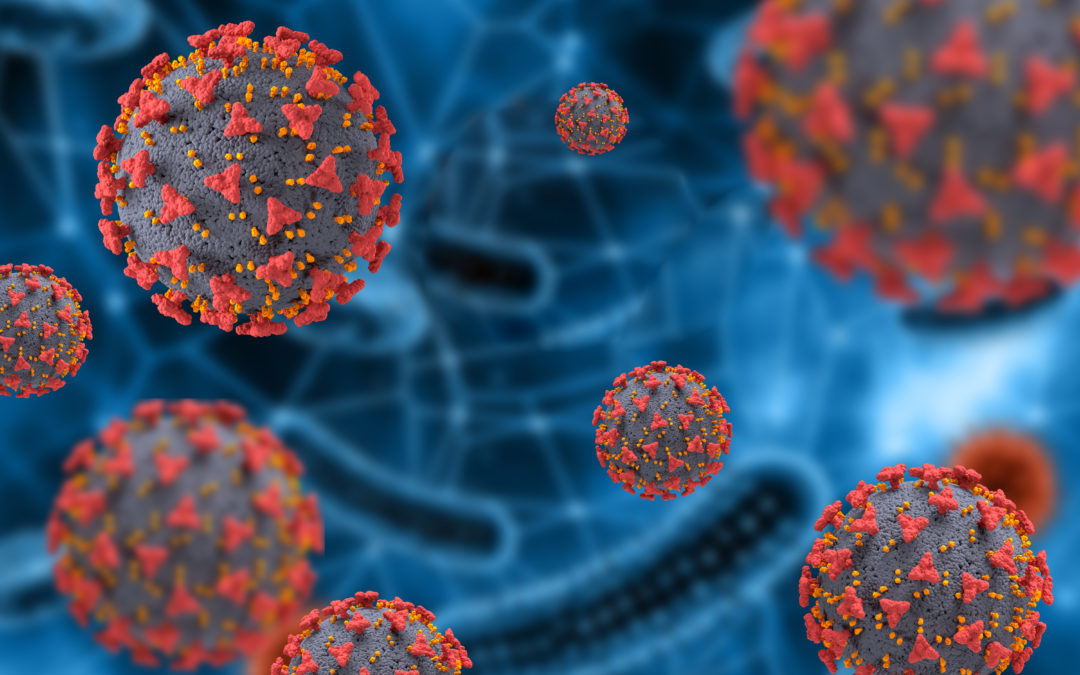Reference
Montopoli, M., Zumerle, S., Vettor, R., Rugge, M., Zorzi, M., Catapano, C. V., Carbone, G. M., Cavalli, A., Pagano, F., Ragazzi, E., Prayer-Galetti, T., & Alimonti, A. (2020). Androgen-deprivation therapies for prostate cancer and risk of infection by SARS-CoV-2: a population-based study (N = 4532). Annals of oncology: official journal of the European Society for Medical Oncology, S0923-7534(20)39797-0. Advance online publication. https://doi.org/10.1016/j.annonc.2020.04.479
At a glance
A study of more than 4,500 male patients over 65 years of age with laboratory confirmed SARS-CoV-2 infection shows that cancer patients run a higher risk of being infected with SARS-CoV-2 than non-oncological patients. However, those with prostate cancer undergoing first or second generation androgen-deprivation therapies (ADT) appear to be partially protected from SARS-CoV-2 infections, confirming that the decrease in levels of the TMPRSS2 complex (the target of ADT therapies: a membrane serine protease involved in prostate cancer and viral infections) hinders the entry of SARS CoV-2 into the cell.
What is already known
In December 2019, a previously unknown coronavirus (SARS-CoV-2) causing severe acute respiratory syndrome emerged in the city of Wuhan in Hubei Province causing pneumonia, multi-organ failure and death. The new SARS-CoV-2 attaches to the cell membrane of the target cell by binding the Spike (S) viral protein to the ACE2 receptor of the target cell; the S viral protein is activated by the TMPRSS2 complex which allows the fusion of viral and cell membranes. TMPRSS2 is a membrane serine protease involved in multiple physiological and pathological processes, including cancer and viral infections. TMPRSS2 is highly expressed in prostate cancer and its transcription is regulated by the androgen receptor (AR). Androgen receptors have been shown to regulate TMPRSS2 expression even in non prostate tissue, including lung. In vitro and in vivo studies show that androgen administration induces TMPRSS2 expression in human lung epithelial cells and that androgen deprivation reduces TMPRSS2 transcription. In addition, in vitro evidence indicates that inhibition of TMPRSS2 is a possible target to prevent SARS-CoV-2 infection.
Design and Method
Data were extracted from 9,280 patients with SARS-CoV-2 infection confirmed in the laboratory by 68 hospitals in the Veneto Region. The average age of the patients was 73 years for hospitalizations, 67 years for hospitalizations in intensive care and 81 years for deceased patients.
Details of patients diagnosed with SARS-CoV-2 infection in the Italian region of Veneto, with or without cancer, were obtained from the following data sources:
– the Veneto Region Archives of COVID-19 positive subjects, updated on April 1, 2020;
– the Tumor Registry Archive;
– the Regional Technical Commission for Drugs.
The primary purpose of the study was to evaluate the frequency of SARS-CoV-2 infection in:
– cancer patients;
– prostate cancer patients;
– prostate cancer patients on therapy with or without ADT,
to assess the severity of SARS-CoV-2 infection in these categories based on patients admitted to hospital, in intensive care or dead.
Main Results
Of the 9,280 patients, 8.5% were diagnosed with cancer and 1.3% had prostate cancer. Considering only the male population (4,532), cancer patients accounted for 9.5% (430) and those with prostate cancer 2.6% (118).
Overall, in the male population, cancer patients had a higher risk of SARS-CoV-2 infection (OR 1.79; CI 1.62 and 1.98). Analyzing the outcome of the disease in male patients, it was observed that those diagnosed with cancer, including prostate cancer, developed more severe pathological conditions. These differences were not due to the age of the patients, since patients infected with cancer had higher hospitalization and mortality rates than non-oncological patients, particularly in the under-70 age group (p = 0.0055).
But when comparing the total number of SARS-CoV-2 positive cases, patients with prostate cancer treated with ADT had a significantly lower risk of SARS-CoV-2 infection than those who had not received ADT (OR 4.05; 95% CI 1.55 and 10.59). An even greater difference was found when comparing cases with prostate cancer treated with ADT with those with any other type of cancer (OR 4.86; 95% CI 1.88 and 12.56).
When the investigations moved to the population of the Region classified according to the therapies used (ADT and non-ADT), surprisingly only 4 out of 5,273 patients treated with ADT in Veneto developed SARS-CoV-2 infection and none of these patients died.
What’s New
Overall, these data indicate that androgen-deprivation therapy in patients with prostate cancer is associated with a reduced likelihood of developing SARS-CoV-2 infections and improved infection outcomes.
Androgen-dependent regulation of TMPRSS2 expression in the lung may explain the increased susceptibility of men to develop severe SARS-CoV-2 infections compared to women.
Since TMPRSS2 levels are under the control of androgens, not only in the prostate but also in the lung, the hypothesis can be made that androgen-deprivation therapies (ADT) can protect individuals with prostate cancer from SARS-CoV-2 infections.
Limitations
Cancer patients with SARS-CoV-2 infection may have been tested at a higher rate than cancer-free patients because they are more often hospitalized. This may explain the higher prevalence of SARS-CoV-2-infected individuals in the population of cancer patients. Cases with prostate cancer treated with ADT may also practice a greater social distance than those with non-ADT prostate cancer and all patients with cancer. These data need to be further validated in large cohorts of patients with SARS-CoV-2 infection and corrected for several variables.
By Francesca Uberti

